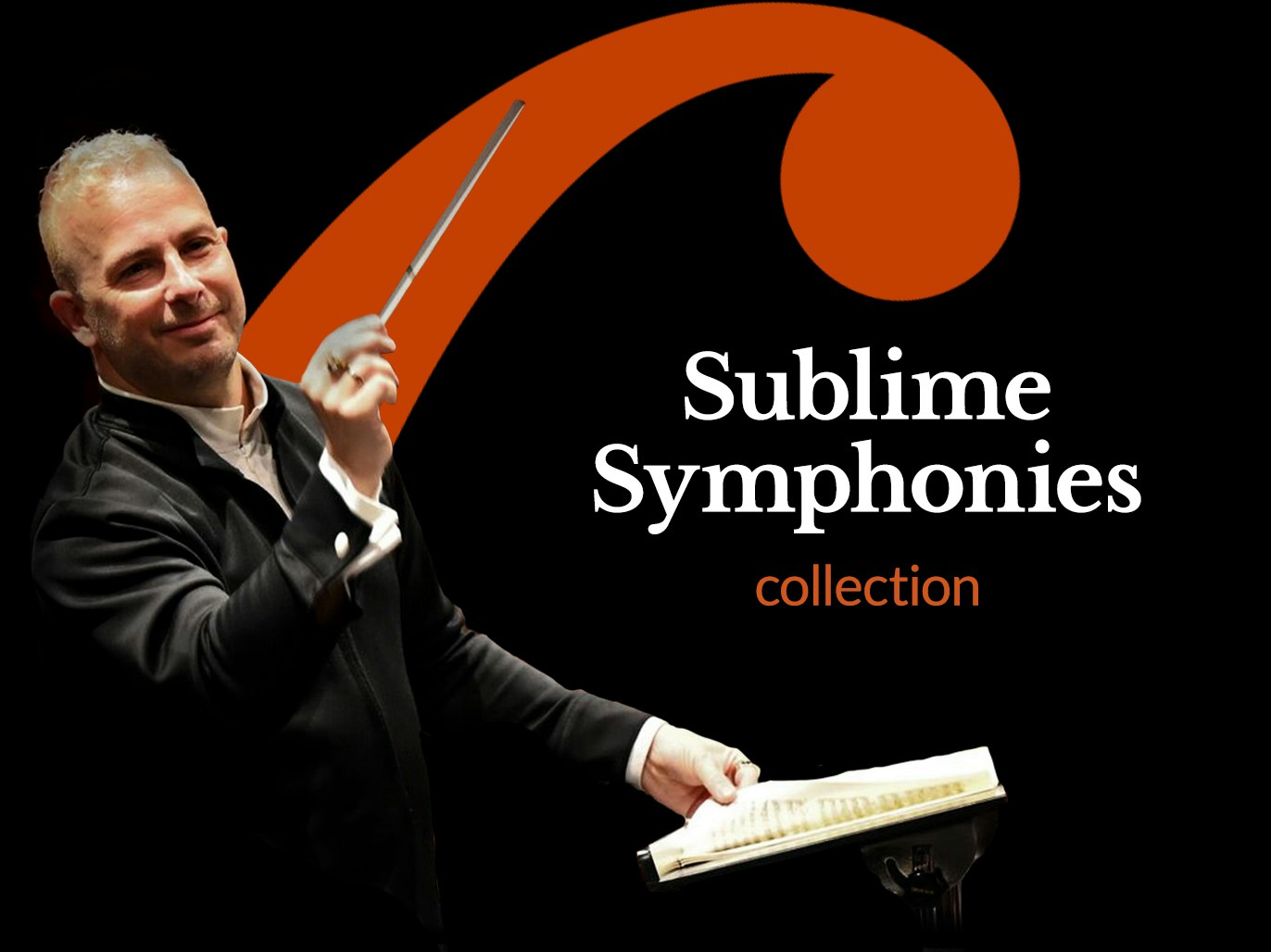
Sinfonías sublimes
Este mes de septiembre en medici.tv, nos sumergimos en el mundo de la sinfonía, un género que sigue vigente en las salas de concierto por sus cualidades atemporales y su versatilidad. Esta selección especialmente curada incluye, además de grandes títulos indispensables, tesoros poco conocidos del repertorio. Desde las primeras sinfonías clásicas de Haydn y Mozart hasta las del siglo XX con Shostakóvich, incluyendo música programática del siglo XIX que se aproxima a lo sinfónico como tal, ¡encuentra aquí todo lo necesario para enamorarte de la sinfonía!
The Symphonic Form
Before we present our selection, we’d like to explore the characteristics of the symphony—its canons and variations—through three lines of thought: first, we’ll discuss the symphonic form, then the symphony’s essence—which has changed a great deal over the course of history—before finishing with the genres revolving around the symphony. First, a little historical overview and definition: since the Classical period, the symphony has been composed of four movements. Each movement is governed by a set of rules defining the tempo, meter, tonality, organization of different melodies, and more. To better understand the genre, let’s return to its origins. The symphony evolved from the Italian Overture (a piece composed to introduce an opera), typically consisting of two fast movements framing a slow one. After a few compositions strictly followed this form (notably the early symphonies of Haydn and Mozart), it became traditional to add a fast, dancing movement before the Finale: the Classical symphony was born! Mozart’s final three symphonies and Beethoven’s Symphony No. 5 are perfect examples of the genre. In spite of these seemingly strict rules, composers managed to infuse the form with their technical and artistic invention by adding movements, reversing them, and even slipping in little surprises (Haydn’s Symphony No. 94 “Surprise” springs to mind). Beethoven also took to replacing the Minuet with a Scherzo, as in his Symphony No. 7 (to be discovered in this sublime concert featuring the Chamber Orchestra of Europe and Julian Rachlin). From this point onwards, symphonic form remained largely unchanged (with a few rare and magnificent exceptions), and it was above all the increase in orchestral numbers that gave the symphony greater depth.
From the Classical Symphony to the 21st Century
As mentioned above, symphonic form hasn’t evolved much since the Classical period, with only some exceptions. When considering the symphonic repertoire of the 19th century, it is absolutely essential to mention the musical influence and cultural importance of Beethoven’s Symphony No. 9 (though far from his only masterpiece of the genre), premiered in 1824. This final symphony is monumental and innovative: Beethoven breaks with standard form by adding a chorus and soloists. As for the structure of the last movement, it resembles that of a fully-fledged symphony, earning it the nickname “symphony within a symphony” (Beethoven was not the only one to make good use of the opportunities offered by the expanded orchestras of the time: almost a century later, Mahler composed his Symphony No. 8 in E-flat Major, nicknamed the “Symphony of a Thousand”). From the second half of the 19th century onwards, several of the great figures of the time took up the symphony in turn, departing from the popular model of the Classical era. By exploiting the breadth of the structure and benefiting from advances in orchestration and increased orchestral numbers, they created a more flexible framework, focusing above all on creative expression. Works became more evocative and more descriptive. Two notable developments emerged from this dynamic: firstly, composers began to incorporate melodies, rhythms, and motifs inspired by traditional music, whether Western or not. A few notable examples include Dvořák's Symphony No. 9 "From the New World", which incorporates Amerindian themes; Tchaikovsky's Fourth, which draws on Russian folklore; the Klezmer inspirations of Mahler's "Titan" Symphony; and even Florence Price’s Symphony No. 3, which rigorously follows the structure of the Classical symphony, but whose dance movement is not a minuet—instead, it is a superb Afro-American Juba dance. The second evolution is the birth of two new sub-genres; the symphonic poem and the program symphony, which we shall discuss in the next paragraph.
Note: we cannot discuss the 20th-century symphony without mentioning Shostakovich’s colossal contribution to the genre. His works reflect not only his artistic evolution, but also his complex relationship with the Soviet regime: in line with the narrative evolution of the symphonic genre, he repeatedly used his compositions as weapons in the fight against tyranny.
"I feel eternal pain for those who were killed by Hitler, but I feel no less pain for those killed on Stalin’s orders. I suffer for everyone who was tortured, shot, or starved to death. My symphonies are tombstones."
– Shostakovich
The Russian master composed a total of 15 symphonies, shattering the myth of the celebrated Curse of the Ninth…
Genres revolving around the symphony
Symphonic works follow precise codes, with only a few exceptions. However, other genres revolve around the symphony too! Genres a facetious editor might almost call sym-faux-nies…Indeed, composers have been able to take advantage of larger orchestras to explore new narrative possibilities: the 19th century saw the development of program music. Examples include the dazzling multi-movement program symphony—take Berlioz’s Symphonie Fantastique, Strauss’s An Alpine Symphony, Holst’s Planets—and the symphonic poem in one long, uninterrupted movement, such as Sibelius’s Finlandia. Another genre gravitating around the symphony is the sinfonia concertante, a cross between a symphony and a concerto, bringing several solo instruments into dialogue with the rest of the orchestra. Both Mozart and Haydn contributed to this genre, with the former writing two works, including the Sinfonia Concertante for Violin, Viola, and Orchestra. But enough about theory! Immerse yourself in the symphonic genre with this playlist that we’ve put together, and discover masterpieces by Mozart, Beethoven, Dvořák, Sibelius, Tchaikovsky and many other legendary composers...

